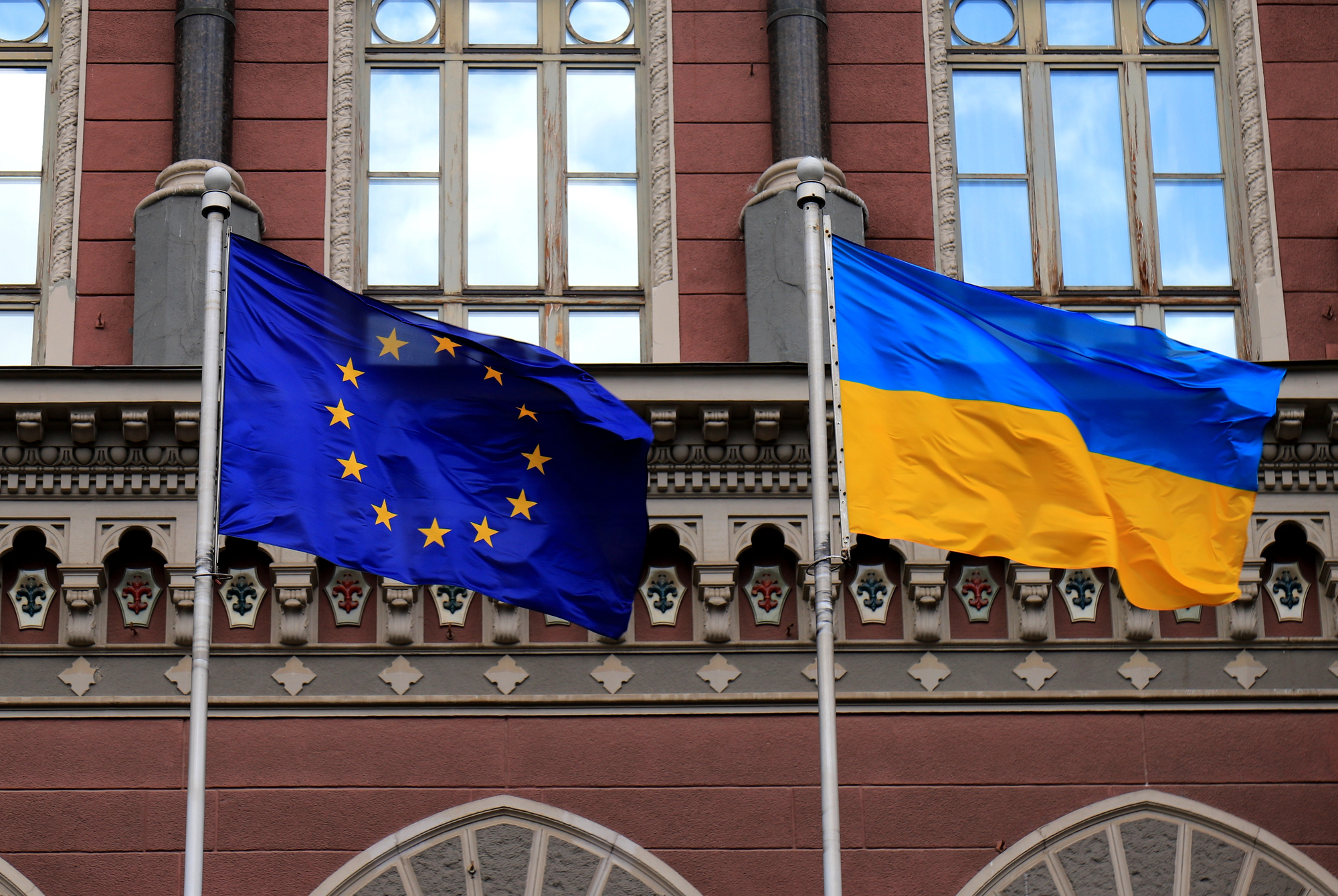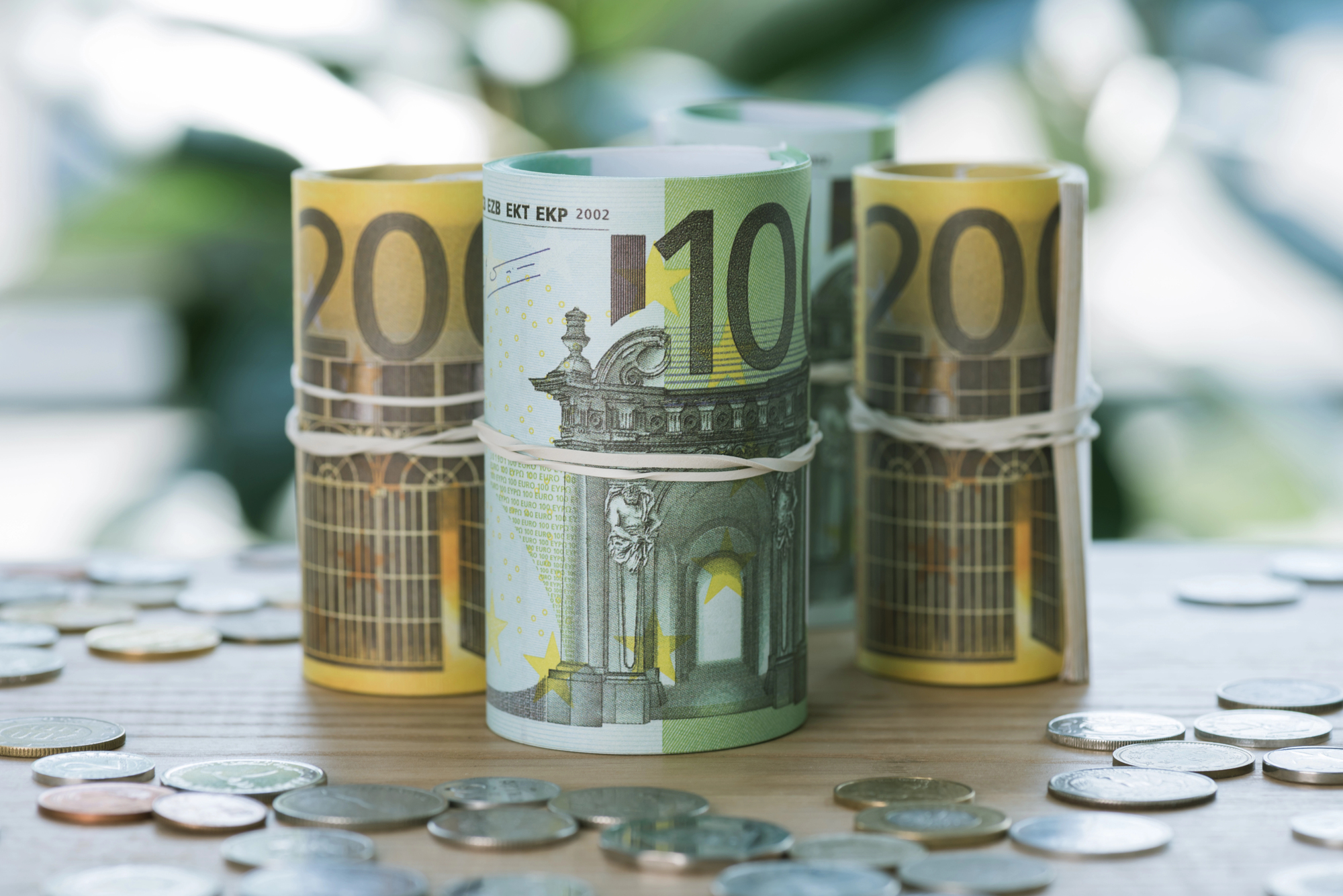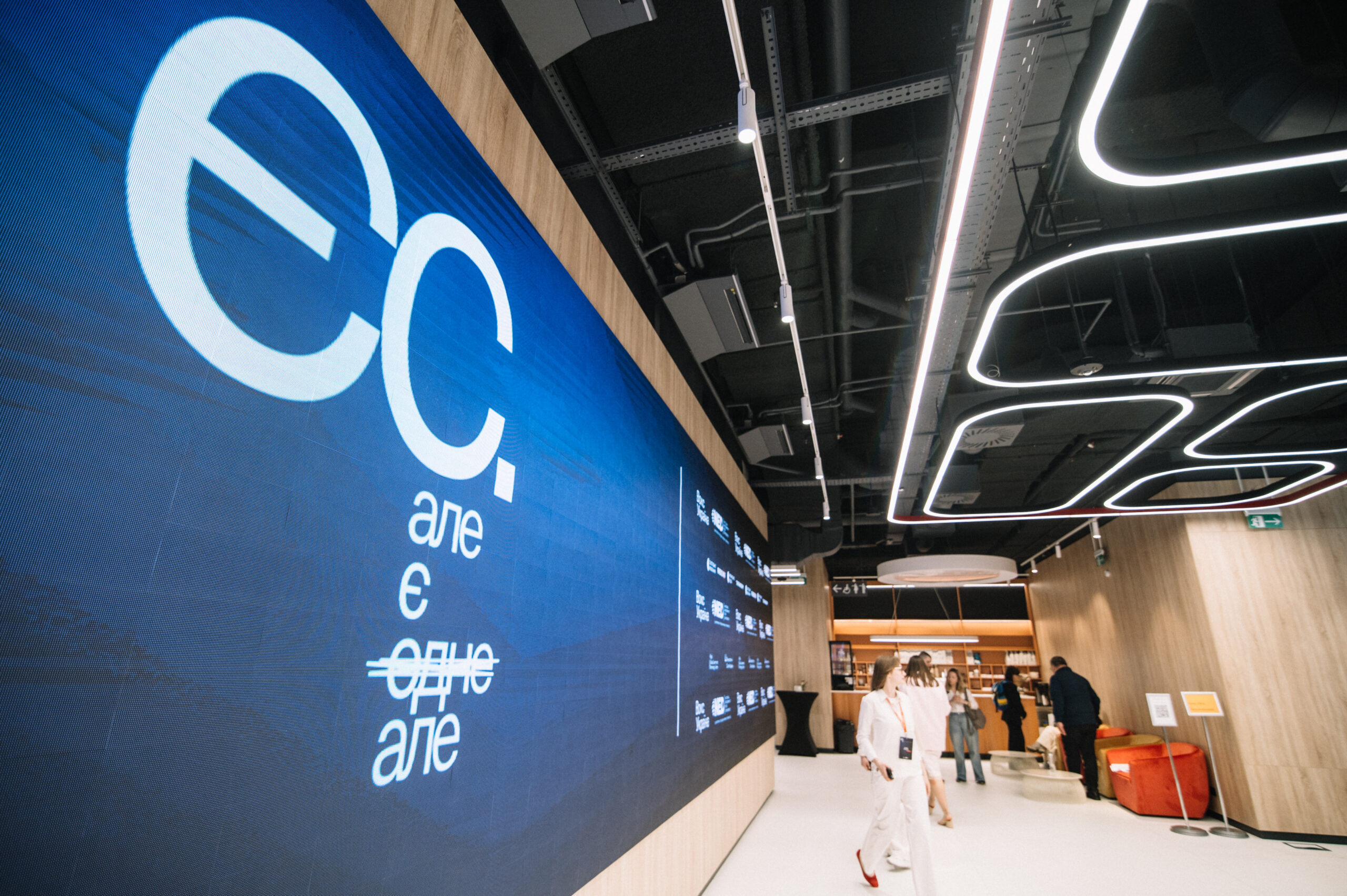“In 2016, there was an understanding that we needed a transparent mechanism for selling state assets. At that time, we launched ProZorro Procurement but the sale of state-owned property was not its main line of business. As always, it was for lack of time and human resources,” says Maks Nefiodov in his conversation with VoxUkraine on the eve of launching the ProZorro.Sale platform. Maks was then Deputy Minister of Economy of Ukraine.
The impetus came from the Deposit Guarantee Fund’s situation at the time.
“In 2015-2016, the Fund was looking to build up a system that would allow for the sale of bankrupt banks’ assets. The Fund tested various commercial platforms but all those attempts ended up mired in corruption scandals,” recalls Oleksiy Soboliev, ProZorro.Sale current acting director.
The thing is that the platforms competed with each other for the Fund’s assets. One got to sell apartments, another one – land, and a third one – other types of property, etc. Sales pools were formed in a non-transparent way, with each of the platforms agreeing with the Fund’s officials and the buyers on which transaction to conduct in whose favor.
In early 2016, Illya Mykhailov, who at the time worked for the Deposit Guarantee Fund, tried to “sell” to the ProZorro team the idea of creating “ProZorro vice versa” – a system that would allow for selling, not buying. Mykhailov talked to Starodubtsev (Olexandr Starodubtsev, developer of the IT system ProZorro) and Maks Nefiodov,” recalls Soboliev in his interview with VoxUkraine.
Soboliev joined the ProZorro.Sale development team from the very beginning.
”At the time, Andriy Motovylovets and I were looking for new adventures (smiles), but joking aside, we were looking for something to do. At one of the meetings on future reforms, I heard Maks speak about a UAH 500 billion issue. That was an estimated value of the insolvent banks’ assets. Then we had a meeting and Maks explained his point. Andriy and I soon joined in the work,” says current platform’s head.
More than four years have passed since then. VoxUkraine decided to find out about the results of ProZorro.Sale and about the platform’s future development plans.
What ProZorro.Sale sells
Presently, ProZorro.Sale auctions if not everything, then nearly everything. The platform can be used to buy real estate, the right to use an Ukrzaliznytsia railroad car, office equipment, shares of a bankrupt company, plots of land and much more.
The declared value of the assets offered for sale in the auctions of all types is over UAH 1.2 trillion, with the revenues from bidding via the platform amounting to UAH 26 billion. The platform arrived at this result gradually. In Figure 1 we have compiled a history of expanding the ProZorro.Sale areas.
Figure 1. Main evolution stages of ProZorro.Sale
The largest area is still the sale of DGF assets. (Figure 2)
Figure 2. Revenues from auctions completed in the six main ProZorro.Sale areas in 2016-2020
* The code “Property” means the sale of property of state-owned and municipal enterprises
DGF assets
In 2014-2016, 95 insolvent banks’ assets were transferred to the Deposit Guarantee Fund. At the time, the Fund found itself in a situation where it needed to return deposits to the depositors of those banks, and cover salaries and other liabilities of the financial institutions. Over four years, the sales of DGF assets accounted for 77.5% of all ProZorro.Sale revenues.
The sales were uneven. Now they are in their final stages (Figure 3).
The first successful auctions to sell the Fund’s assets via ProZorro were run in November 2016. And in 2017, the sales revenue amounted to UAH 4.63 billion. In total, the 4 years of selling DGF assets brought in UAH 18,7 billion in revenue for ProZorro.Sale, or 71% of the platform’s total revenues.
Figure 3. DGF’s revenues from the sale of its assets via ProZorro.Sale in 2016-2020
* The calculations here and henceforth include revenues from auctions for which contracts were signed.
Bidding on ProZorro.Sale created a side effect. Following the launch of ProZorro.Sale, the repaying of loans within the DGF asset portfolio increased. When ProZorro.Sale started off, the customers began to better repay those loans.
Why is that?
“Previously, a scheme had been used under which you could buy those loans at a higher discount rate or they might otherwise not go on sale at all. When transparent auctions were introduced, there was an understanding that you could be left without a loan and your property secured by this loan. You had better repay it,” says Soboliev.
According to Olha Bilai, DGF’s Deputy Managing Director, the recovery rate (all funds repaid as a percentage of total loans) is 17%. “In the case of bankrupt legal entities, it averages 9%. That is, our creditors receive twice as much as creditors of other legal entities.” For Ukraine, with its judicial and law enforcement system, Bilai considers this to be a very good indicator.
The property of state-owned and municipal enterprises
ProZorro.Sale started auctioning this type of assets in March 2017. The sale of state-owned properties amounted to UAH 2,985 million (Figure 4), or 12% of the system’s successful bids.
There are more than 3,700 state-owned enterprises in Ukraine, and some of them use the platform for selling anything they do not use in their production activities – from scrap metal to real estate. Among the active participants are Ukrzaliznytsia, Ukrboronprom, Ukrenergo and others. Following the launch of state property sales at ProZorro.Sale, Ukrzaliznytsia, for one, used the system to earn UAH 801 million selling scrap metal. Ukrenergo sold scrap metal and machines for UAH 239 million.
Starting on February 1, 2020, the sale of untreated timber by forestry farms via the system also began.
Figure 4. Revenues from the sale of state-owned and municipal property via ProZorro.Sale in 2017-2020.
The first successful small privatization auction was run in the second half of 2018, two years after the launch of ProZorro.Sale. The revenues from small privatization currently amount to UAH 1,935 million or 8% of the system’s total successful bids. (Figure 5)
The popularity of these auctions is gradually increasing. According to Dmytro Sennychenko, head of State Property Fund of Ukraine, “if we talk about small privatization, in 2020, 796 participants took part in the auctions. The average competition was 3.45 participants in the auction, with an average price increase of 39.8%”.
For comparison, in the first half of 2019, an average number of participants in privatization auctions did not exceed 2.08, with an average increase in the value of the lots of 1.6%.
According to the SPFU, the record average number of participants in transparent auctions of 3.84 was seen in June 2020 (versus 1.82 in June 2019), which ensured an average price increase of 208% (versus 3.56% in June 2019).
Figure 5. Revenues from the sale of small privatization objects at ProZorro.Sale in 2018-2020.
According to ProZorro.Sale, as of June 17, 206 out of 1,086 small privatization auctions were run as Dutch auctions. However, they amount to only 3.3% of the privatization proceeds.
The sales process is as follows. According to law, upon determining the asking price, the objects are put up for sale in an English auction (raising bids auction). If there is no demand, an object’s ask price is reduced by 50%, and an English auction is run again. If this auction does not have a winner, the object is then sold in a Dutch auction.
“Every Dutch auction is a psychological game,” explains DGF’s Olha Bilai. The first person to stop the price from going down has the right to be the last one to name the price. This participant sees the bids of all players and can offer a higher bid.
Reducing the market price to a minimum does not mean that an asset will be sold for it. According to Bilai, low prices are very attractive to buyers, and very often they begin to go up after reduction. With regard to asset types, the prices almost always rise in the real estate auctions. Prices also go up in the case of selling mortgage-backed loans.
For Dutch auctions, lots are selected based on certain criteria. “As a rule, Dutch auctions are used for objects that have a book value several times higher than their real market [value], or objects that, unfortunately, no longer cost anything on the market,” says Sennychenko.
For instance, in February 2020, the SPFU sold a National Bank’s recreation center. According to the Fund’s head, in 2010-2013 (when Serhiy Arbuzov was Chairman of the National Bank – VoxUkraine), the NBU spent UAH 60 million on building a luxury recreation center “Prykarpattia” in Yaremche, Ivano-Frankivsk oblast for its board members. It is an 8-room building of over two thousand square meters, with armored windows, chandeliers made of crocodile skin and elevators from the first to the second floor. The problem is that it has no waterproofing and utilities (electricity, gas and sewerage).
This object was put up for sale in an English auction for UAH 60 and 30 million but it did not arouse any interest from investors. As a result, it ended up sold in a Dutch auction for UAH 17.3 million.
Leasing state-owned properties
The leasing of state-owned properties makes up a very small part of ProZorro.Sale revenues – UAH 254 million (Figure 6), which cannot be said about the number of auctions. Leases account for 1,757 successful bids. An average final price of monthly lease rates is UAH 12,000. Besides, the system ran 3,381 auctions4 for railroad car leases collecting UAH 3.5 million5 in revenue. An average daily revenue from leasing one railroad car amounted to 1,027 UAH.
State-owned enterprises started connecting to ProZorro.Sale in the year the platform was launched.
“In 2016, I worked at Ukrposhta as Director for Real Estate and Infrastructure. It was when we started leasing Ukrposhta’s surplus real estate via ProZorro.Sale,” recalls Sennychenko.
Since Ukrposhta leases 1.2 million square meters of real estate across the country and warehouses at railway stations, ProZorro.Sale became a tool helping the company significantly increase its lease revenues. Over about two and a half years, the company increased lease revenues from UAH 11 million to UAH 69 million. According to Sennychenko, it is thanks to the fact that ProZorro.Sale ensured significant competition for the participants and an increase in the lease price in the auctions.
In terms of the amounts received, the second largest lessor after Ukrposhta is Ukrzaliznytsia (UAH 31 million in less than 2 years of sales) that leases not only empty premises but also railroad cars.
Also, National Public Television and Radio Company of Ukraine receives significant revenue from leasing out its premises in various cities of Ukraine (UAH 30.2 million over about 3 years of using ProZorro.Sale).
Figure 6. Revenues from the lease of state-owned and municipal properties via ProZorro.Sale in 2017-2020.
In the future, all state property should be leased via ProZorro.Sale.
At the end of 2019, the law On Lease of State and Communal Property was adopted. On February 1, the work on leasing out state and communal property exclusively via ProZorro.Sale” was to begin.
To make things work, the Cabinet of Ministers had to adopt three bylaws. “As of early July, only one legal act out of the three is adopted. To launch the lease market, we expect the Cabinet of Ministers to approve a standard agreement and a method for calculating the value,” says State Property Fund’s head.
Other. Among other interesting areas is the sale of oil and gas fields (organizer: Geonadra) that began in March 2019 bringing in UAH 503 million (Figure 7). Those are quite large lots: an average amount of one such auction is UAH 14.4 million, with an average auction amount in the system of UAH 1.1 million. On average, those lots generate a 63% price increase.
Figure 7. Revenue structure of completed ProZorro auctions. Sales by main bodies in 2016-2020.
The figures are taken from bi.ProZorro.sale where monthly amounts indicate lease revenue from leasing real estate properties and daily amounts indicate revenue from leasing railroad cars. It is impossible to come up with exact revenue figures based on the available data.
Complaints against auctions and the lack of “that very” button
Unlike in public procurement, ProZorro.Sale does not have a separate complaint review body regarding auction results. A Commission on Complaint Review and Preparation of Proposals for Organizing and Conducting Open Bidding (Auctions) was established to review complaints against SOEs. The appeal procedure depends on the asset types. For matters regarding auctions for the sale of insolvent banks’ assets, it is possible to contact the Deposit Guarantee Fund.
“On average, less than 1% of complaints against auctions are filed. Of these, the complaints having some substance are about 0.5%. It’s very, very little,” says Oleksiy Soboliev. According to him, earlier, before the launch of ProZorro.Sale, almost every second auction was challenged in court, or disrupted due to political reasons. Today, the process is much calmer. The SBU sees that the information is in the system and reacts to tenders less aggressively, without interfering with the bidding process or the signing of contracts.
When ProZorro.Sale receives a court order ordering it “to stop the bidding”, the platform cannot do so physically. “There is simply no such button. We are sometimes threatened with lawsuits. Those threats end in nothing, because it is impossible to stop the bidding process because of us, and no law says that we can do it,” says Soboliev. The system is specifically designed to limit the influence on the auctions.
The most problematic assets are the parking business. The system sells the rights to operate parking lots for the Kyiv City State Administration and other town halls. “These auctions are run with lots of conflict. Those participants who lose often try to challenge them. Another problematic sector is the auctions for the sale of scrap metal,” says the SOE’s acting director.
The main grounds for appeal are allegedly incorrect or incomplete information presented in the system. There are disputes over changes to the delivery terms, or because a buyer does not like their purchase.
ProZorro.Sale after quarantine
According to ProZorro.Sale, with the onset of quarantine in March-April, there was a sharp decline in the stated value growth dynamics (from 81% in February to 31% in March). The percentage of successful bids also decreased from 15% and 9% in January and February to 5-6% in March-May. Starting in June, the situation began to gradually level off.
“During the crisis, the sales volumes and the number of lots put up for sale by the DGF were not affected. There is another trend. We now have declining conversion – the ratio of the price at which we sold the lot to its face value. This is happening for perfectly natural reasons,” says Olha Bilai.
At the very beginning, the bidders purchased from the Fund the most valuable assets such as a loan secured by a working plant.
This year, the Fund has nearly ceased to make individual sales and is now selling loan pools. According to Bilai, individual sales of low-quality assets can lead to a price decline of up to 20% of face value. The Fund is increasingly selling low-quality assets, with the price declining precisely due to their worse quality.
The situation with the State Property Fund’s assets is different. During quarantine, the Fund refocused from selling state-owned enterprises to selling real estate properties.
“Quarantine has had an effect on the possibility of conducting general and inventory audits of state-owned enterprises. The pandemic could also negatively affect such assets’ market value, as it was quite difficult for potential investors to conduct due diligence on these objects during the extended period of quarantine,” concludes Sennychenko.
On March 27, he wrote an official letter to the Fund’s regional offices containing a proposal to cancel the auctions of gradual price reduction due to the COVID-19 pandemic, and to take measures to put those objects up for auction in the future.
ProZorro.Sale will see two major changes in the coming two years.
First, it will stop working with the insolvent banks’ lots. This year, the sales of the assets of the large Deltabank and Nadra banks will be completed.
Second, other assets will be auctioned off via the platform, specifically:
- Rights to lease communal and state-owned property. The state owns tens of thousands of properties to be leased. Currently, not much is known about the lease of communal property. The data are fragmented and this segment’s volume is not clear. “We think that it is around the same size as the state-owned property. There is an understanding that the lease value is often set too low,” says Soboliev.
- Agricultural land after the launch of the land market. To launch land auctions, both the law and the auction procedure need to be amended.
- Problem assets of state-owned banks. These include, interalia, the bad debts of PrivatBank and Sberbank that they will transfer to the DGF. To set this mechanism in motion, the legislation needs to be revised.
Additional directions of work will include the connection to the platform of auctions for the sale of seized property, and the launch of full-fledged timber auctions.
This material was prepared under the Budget Watchdog project with the support of the German Government’s project “Good Financial Governance in Public Finance III”, implemented by Deutsche Gesellschaft für Internationale Zusammenarbeit (GIZ) GmbH.
Attention
The authors do not work for, consult to, own shares in or receive funding from any company or organization that would benefit from this article, and have no relevant affiliations





